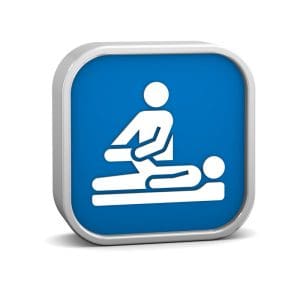 After an episode of low back pain has lasted between two and six weeks, or if there are frequent recurrences of low back pain, it is reasonable to consider back pain exercises and physical therapy for back treatment. (Some spine specialists consider back exercise and physical therapy sooner, particularly if the pain is severe.) In general, the goals of back pain exercises and physical therapy are to decrease back pain, increase function, and provide education on a maintenance program to prevent further recurrences.
After an episode of low back pain has lasted between two and six weeks, or if there are frequent recurrences of low back pain, it is reasonable to consider back pain exercises and physical therapy for back treatment. (Some spine specialists consider back exercise and physical therapy sooner, particularly if the pain is severe.) In general, the goals of back pain exercises and physical therapy are to decrease back pain, increase function, and provide education on a maintenance program to prevent further recurrences.
Passive Physical Therapy – Modalities
There are many different forms of physical therapy. Acutely, the therapist may focus on decreasing pain with passive physical therapy (modalities). These are considered passive therapies because they are done to the patient. Examples of modalities include:
- — Heat/ice packs
- — TENS units
- — Iontophoresis
- — Ultrasound
Active Physical Therapy – Back Pain Exercises
In addition to passive therapies, active physical therapy (exercise) is also necessary to rehabilitate the spine. Generally, a patient’s back exercise program should encompass a combination of the following:
- — Stretching for back pain exercise
- — Strengthening for back pain exercise
- — Low-impact aerobic conditioning
Even patients with a very busy schedule should be able to maintain a moderate back pain exercise regimen that encompasses stretching, strengthening, and aerobic conditioning. These exercises suffice as physical therapy for back pain relief.
- — Stretching for back pain exercises. Almost every individual who has suffered from low back pain should stretch their hamstring muscles once or twice daily. Simple hamstring stretching does not take much time, although it can be difficult to remember, especially if there is little or no pain. Therefore, hamstring stretching exercises are best done at the same time every day so it becomes part of a person’s daily routine.
- — Strengthening for back pain exercise. To strengthen the back muscles, 15-20 minutes of dynamic lumbar stabilization or other prescribed exercises should be done every other day.
- — Low-impact aerobic conditioning. Low impact aerobics (such as walking, bicycling or swimming) should be done for 30-40 minutes three times weekly, on alternate days from the strengthening exercises.
Source: www.spine-health.com; Peter F. Ullrich, Jr.; October 25, 2013.








